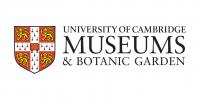The mollusc collection contains upward of 100,000 lots (probably representing a few million specimens) and is generally thought to be the largest in Britain after those in the three national museums in London, Cardiff and Edinburgh. Most of the specimens were collected towards the end of the last century, the earliest molluscan accession being made in 1819.
The bulk of our mollusc collection was amassed by Robert MacAndrew, who bequeathed it, along with a valuable library, to the University in 1873. The MacAndrew Collection, which contains over 2,000 genera and nearly 16,000 species, was assembled from a variety of sources. Much of it he collected himself on various dredging trips in the N.E. Atlantic, Mediterranean and Gulf of Suez. All the specimens are from well defined localities, and include many small taxa that do not exist in other collections made at this time. Since MacAndrew was especially interested in the growth of shells, each species is usually represented by 12-20 specimens to reflect a long growth series. This greatly enhances its usefulness as a reference collection. As a consequence of this practice, the total number of specimens in this collection alone exceeds 200,000. The material from the Gulf of Suez is especially important for two reasons. First, it is a rich source of types, particularly for taxa described by the Adams brothers. Second, it provides an invaluable source of reference relating to Mediterranean and Red Sea faunas before the construction of the Suez canal, an event that has subsequently resulted in extensive faunal exchange between the two regions.
Subsumed within the MacAndrew collection is part of the W.H. Benson collection, which consists of land and freshwater molluscs, largely from India. Benson, who lived in India during the early part of the last century, assembled the earliest and largest collection of snails from southern Asia that exists anywhere in the world. The largest part of it is now in the Natural History Museum, but a significant proportion exists in Cambridge. As well as the obvious importance of the type material, the Benson collection is rich in endemic species, including many that appear to have become extinct since the 1830s.
The collection is rich in material collected on Atlantic and Pacific islands. Land snail faunas from these islands are of considerable interest to evolutionary biologists. These faunas have been devastated by habitat disturbance and by the deliberate or accidental introduction of alien species. The Hawaiian islands, for example, are estimated to have lost three-quarters of their 763 species during the last 120 years. Our collection contains specimens that can furnish much of the baseline data to study these events. For example, the collection includes several drawers of Partula, a land snail genus now extinct from much of its former range in the Pacific. The collections of R.T. Lowe and J.M. Leacock, from Madeira and the Canary Islands, are especially important. These islands are famous for their high species diversities and high levels of endemism.
Our island collections have recently been enhanced by accession of the Mollusca collected on the Sir Peter Scott Commemorative Expedition to the Pitcairn Islands (1991-2). This consists of extensive collections of marine molluscs and land snails from each island in the Pitcairn group. In addition, it includes fossil shells from Henderson Island (a World Heritage Site), both from its uplifted reef and land snails, including some newly described species, from cave deposits along its coastal slope. Many of the land snails recovered from these deposits are extinct, the cause of their demise apparently resulting from early Polynesian habitat disturbance.
Other historically important mollusc collections include:
- S.P. Woodward Collection (1867). Woodward wrote a classic text A Manual of the Mollusca. His collection contains specimens collected by both Charles Lyell and Charles Darwin.
- J. Hepburn Collection (1870). Consists mostly of material from Western North America but also includes specimens from the Atlantic coast of the USA, Chile and from some Pacific islands.
- Jane Saul Collection (1895). This is large, consisting of about 13,000 shells, mostly from the Indo-Pacific. It includes a number of type specimens and many that were figured by Reeve in Conchologia Iconica and by Sowerby in Thesaurus Conchyliorum, two of the most influential conchological works published during the nineteenth century.
- Professor H.M. Gwatkin (1907). Extensive collection of slides of mounted molluscan radulae.
- W.E. Collinge Collection (1909-1910). Consists mostly of pulmonate specimens in spirit, including types and paratypes. Spirit material of type series is especially important because several species of mollusc can only be distinguished by study of the anatomy of the soft tissues.
Other recent accessions include part of the M.P. Kerney and R.C Preece collections of European Quaternary Mollusca. These are quantitative series of molluscan assemblages recovered from stratified sequences at many critical sites, several no longer accessible. They are important in providing records of the way in which molluscan communities developed during different stages of the Quaternary.





